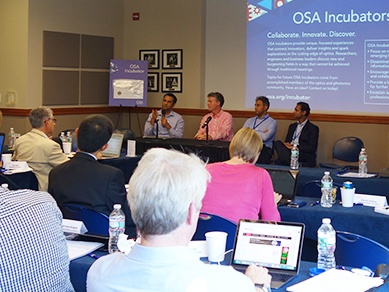Next Steps for Label-free Optical Techniques in Diagnostics & Imaging
Marcia Lesky

Speakers highlighted key potential applications including diagnosis - from screening to biopsy – as well as intraoperative surgical guidance and the management of disease. This can include treatments for cancer, cardiovascular diseases, diabetes, metabolic disease, wounds/burns and neurodegenerative disease.
But they also clarified the continuing challenges facing researchers, industry and clinicians:
- Technical challenges – the amount of light needed, speckle, absorption, limited contrast, specificity, cost and the need to fit within the clinical workflow
- Translational challenges –communications barriers between different communities: the lack of a common language and clear agreement on terminology continues to impede progress – including at the level of funding policy. It can be difficult for clinicians to understand and interpret data from new technologies. There is also a need to ensure that the technical approach is addressing the appropriate clinical need – some current technologies, although they work as intended, may not end up benefiting healthcare.
- Regulation and standards challenges – in key areas, such as phototoxicity for internal tissues, guidelines are cumbersome and/or can be unclear, or are non-existent. Such safety concerns can inhibit ethics approval, investment and widespread uptake of a new label-free technique.
- Quality management challenges – academic researchers often have to put procedures in place to ensure that a device or protocol is consistent – quality planning, control, assurance and document control need to be embedded in the development path of new label-free technologies.
- Cultural acceptance challenges – medicine is a moving target. Regional differences in availability and understanding as well as cost effectiveness and reimbursement issues can have impacts on the use of label-free technologies.
At the end of the meeting, participants agreed there is a need for a globally accessible resource of pooled information, e.g. concerning safety assessments, and resources to help identify information on funding sources, standards and regulations, and academic-industrial partnerships in order to translate technology to clinical use. The team will continue to develop clear recommendations and a path forward that will soon be available on OSA.org.
